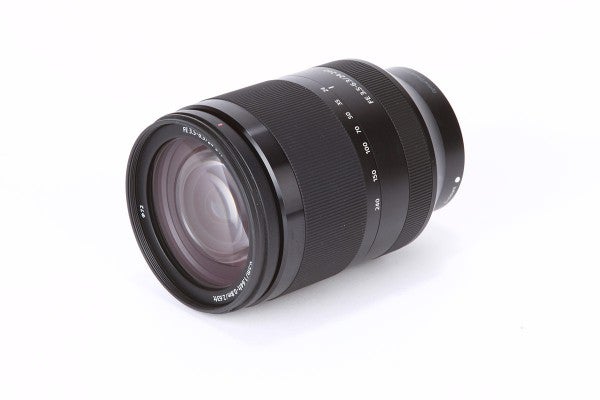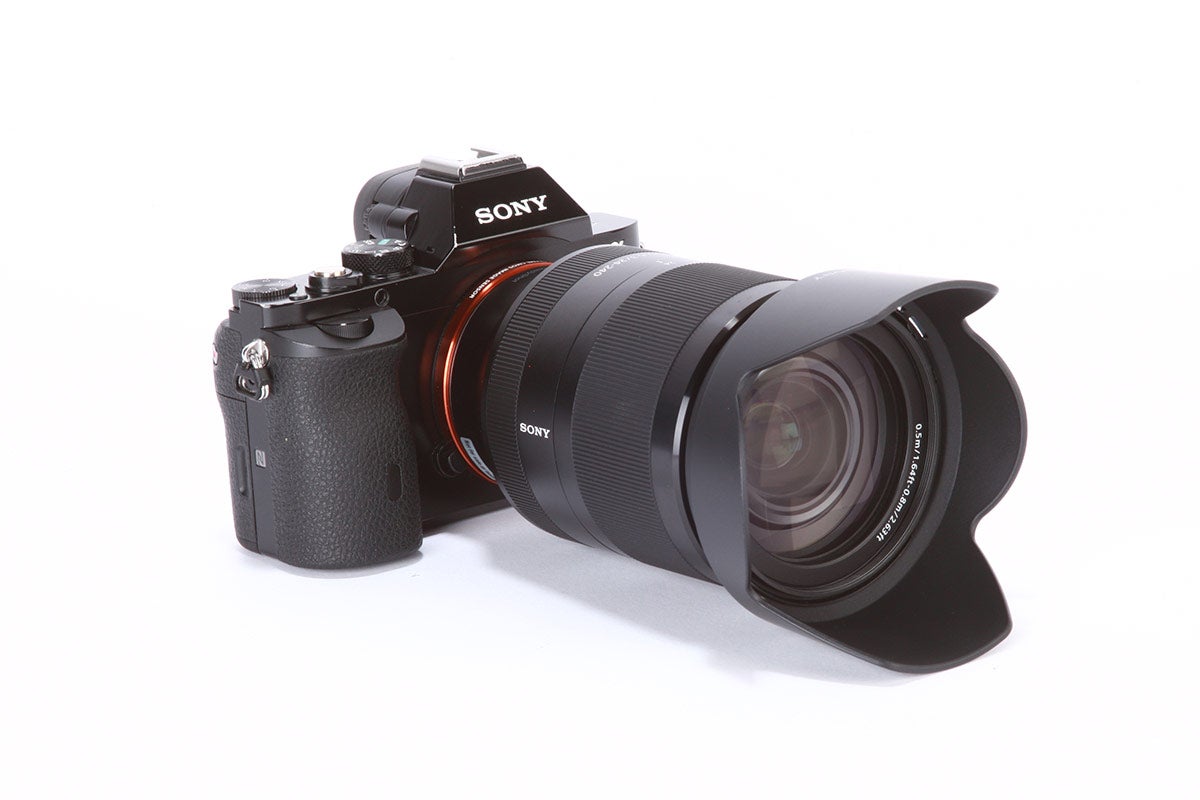Sony’s travel zoom lens for its Alpha 7 series of cameras has a complex design, but how well does it partner with a full-frame sensor? Richard Sibley finds out
Sony FE 24-240mm f/3.5-6.3 OSS Review
Build and handling
Measuring 80.5 x 118.5mm, the lens is a reasonable size. Personally, I wouldn’t consider it large, although others may disagree. It weighs 780g, which again I find quite reasonable for a travel zoom lens, particularly one with built-in optical stabilisation and designed for a full-frame camera.
I tested the lens on the Sony Alpha 7R, and the combination felt good in the hand. There is obviously an imbalance between the lens and camera, but again, I never found this to be an issue. A Nikon D7000 and 18-200mm lens may be better balanced, but that camera is significantly larger. Here, the combination of lens and camera is smaller, and for travelling that is exactly what I would want.
The lens has a large ribbed zoom ring, and a smaller focus ring nearer to the body of the camera. Besides these, there are no other controls on the body of the lens. Notably, there is no zoom lock. The lack of lock isn’t actually a problem as the zoom barrel is quite stiff to turn. This doesn’t make it too easy to zoom quickly and smoothly, so if you’ll be using this lens for video it would be best to use a follow focus lever. However, the lens does benefit from a total lack of lens creep. I tested this by having the lens face down and turning the zoom barrel to various focal lengths – not once did it creep out of position. On many lenses there is usually at least one position where it edges out of place, but that’s not the case with this 24-240mm optic.
As with other lenses in the FE range, the 24-240mm has electronic, fly-by-wire focusing, which means that turning the focus ring signals for the electronic motors to adjust focus of the lens. I found this smooth and straightforward to use, and it produced accurately focused images, especially with the aid of the viewfinder or rear screen’s manual-focus magnification.
Image stabilisation works reasonably well. When you lightly press the shutter button you can see the stabilisation working. After a second it settles and counteracts any shake with a more fluid, floaty movement, giving around 4 extra stops of shutter-speed exposure. Generally, I found that I could shoot at about 1/60sec with the lens set to 240mm, although I did manage a perfectly sharp shot at just 1/15sec, which would support Sony’s claim.
Focusing operates at a good speed at the wideangle settings, although it is slower at 240mm, at which point the f/6.3 maximum aperture setting allows less light to reach the sensor. With the Sony Alpha 7R relying on contrast-detection AF, having a good amount of light is critical – the lack of it results in slightly slower, and sometimes less accurate, focusing on the Alpha 7R. With the Alpha 7 and Alpha 7 II, I found that focusing was a little faster at the largest aperture and longest focal length.






